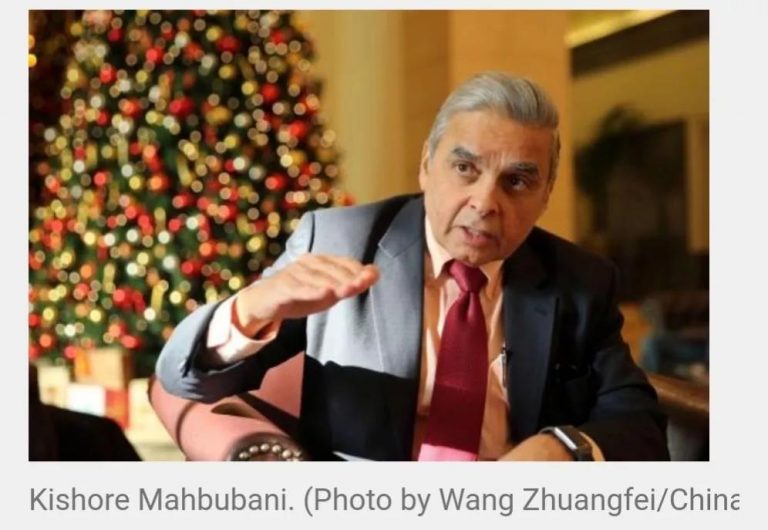
China Daily 2019-01-07
Target in sight as global economy faces key challenge
With global stock markets ending last year in turmoil, the economic outlook for 2019 remains uncertain.
But for China, this year is one of the final steppingstones to becoming a “moderately prosperous society” by 2020 in time for the 100th anniversary of the founding of the Communist Party of China the following year.
The challenge for the global economy, however, is to avoid a recession. There are fears that the often weak but nonetheless sustained recovery from the depths of the 2008 global financial crisis has now run its course and a correction is inevitable.
There are a number of risks on the horizon, not least trade tensions between the United States and China, which have yet to be resolved.
There are also concerns about Europe, with the possibility of the United Kingdom leaving the European Union in March without agreeing to an exit deal, and fears that Italian banks will create a systemic crisis for the euro.
On a more positive note, this year marks the 70th anniversary of the founding of the People’s Republic of China, and the country will host the second Belt and Road Forum for International Cooperation in April.
At this event, the Belt and Road Initiative, which has huge potential to drive economic growth, will take greater shape.
The government made its economic agenda clear at the Central Economic Work Conference, attended by the country’s leaders in Beijing in December.
The agenda includes tax cuts as part of a more proactive fiscal policy; boosting advanced manufacturing; tackling so-called zombie enterprises; raising domestic consumption; rural revitalization; capital market reform; fostering a healthy property market; further opening-up the economy and allowing greater market access to foreign companies.
Great attention will continue to be paid to China’s growth performance this year. Growth was 6.5 percent in the third quarter of last year, in line with the target set in the Government Work Report in March.
It needs to average about 6.3 percent this year and next to meet the target of doubling 2010 GDP by the end of 2020.
Song Yu, chief China economist at Goldman Sachs in Beijing, said the government will want to carefully manage the economy to meet this target.
“This will be of critical importance this year. The government will not tolerate a sharp slowdown in the economy, although there might be some flexibility for a growth target of less than 6.5 percent,” he said.
“One of the priorities also will be maintaining employment stability, especially making sure college graduates, migrant workers and former members of the armed forces get jobs.”
Edward Tse, founder and chairman of Gao Feng Advisory, a management consultancy, said stability will be key for the government.
“The economy may slow a bit, but not a whole lot. The government has a number of levers it can pull to ensure stability,” he said.
“Part of the problem for China is that it is entwined in the global economy and at the center of global supply chains that might be affected by increased trade protectionism.”
Xiong Yuan, chief analyst at Guosheng Securities, a research company, also believes achieving overall stability will be the government’s main aim, with growth of more than 6.2 percent likely.
“China’s economy will face a number of challenges, particularly from external factors, so stability will be the main priority,” he said.

Trump rumors
Wang Qing, chief economist at Golden Credit Rating International in Beijing, predicted the government will set an annual growth target of 6 to 6.5 percent in its next work report in March.
He said last month’s Central Economic Work Conference pointed the way to major tax cuts of about 1.5 trillion yuan ($218 billion).
“These tax cuts will encourage enterprises to invest more and, more important, encourage greater private investment and consumption,” he said.
How the global economy fares this year may hinge on what happens in the U.S..
Some of the stock market turbulence at the end of last year arose from rumors that U.S. President Donald Trump was about to fire Federal Reserve chairman Jerome Powell.
Trump has been openly critical of the Fed’s monetary tightening, with four interest rate rises announced last year.
Some observers expect U.S. growth, which hit 4.2 percent in the middle of last year, to slow this year as the boost delivered by Trump’s tax cuts begins to wear off.
Douglas McWilliams, deputy chairman and founder of the Centre for Economics and Business Research, a consultancy in London, said the apparent row over interest rate policy is at odds with reality.
“Whatever Trump’s intervention, the Fed is not actually going to put up interest rates. If you analyze the situation, now is not the time to put them up,” he said.
If there is no reversal, the expansionary phase of the U.S. economy will be the longest ever by July, according to records that were first kept in 1854. It would exceed the 120-month expansion between March 1991 and March 2001, according to the National Bureau of Economic Research in the U.S..

George Magnus, an associate of the University of Oxford China Centre, said the “extreme longevity” of this upward swing in the business cycle is not sufficient in itself to predict an imminent recession, but it is becoming harder to sustain.
“It is not just the U.S.. Most of the Western world touched bottom in 2009. This long recovery needs continuous energizing to sustain it. It is like riding your bike into a wind uphill-you need to put in that extra effort in order not to stall. You don’t need much of a shock to knock you off balance,” he said.
One of the risks that could affect the global economy is increasing protectionism and, in particular, the trade dispute between the U.S. and China.
There were signs of a more constructive relationship between the two countries as last year drew to a close.
President Xi Jinping and Trump discussed trade in a telephone conversation on Dec 29.
Both stressed the progress made in the trade talks while voicing hope for further results that can bring benefits to both sides and the world.
Tse, at Gao Feng Advisory, is optimistic that the dispute will be resolved early this year.
“There is something like a 50 percent possibility that it will be pretty well handled and the crux of the issue will be largely solved. Some of the underlying issues between China and the U.S. will continue to be around for some time,” he said.
Zeng Kanghua, a public finance professor with the Central University of Finance and Economics in Beijing, said China’s economy would remain “resilient” even without a resolution to the trade dispute.
“The economy will still be able to expand at a reasonable rate above 6 percent, given that there are a number of strategic development opportunities. With a resolution, the growth outlook will be better and likely to be in line with last year’s,” he said.
The other risk this year stems from Brexit and the possibility of the UK leaving the EU without a negotiated deal on March 29, the date on which it is due to exit.
Most commentators believe that while this could disrupt the UK economy and UK-EU trade, it is unlikely to destabilize the global economy.
Magnus, author of Red Flags, a new book about the Chinese economy, said: “The good news is that we don’t have to wait much longer now for some kind of resolution. The clock is ticking. Proper grown-up decisions will become unavoidable in the next few weeks.”
If there is a global recession this year, few observers expect it to be anything like the same scale as the global financial crisis a decade ago.
Jing Ulrich, managing director and vice-chairman of JPMorgan Chase’s Asia Pacific operations, said banks have learned their lesson from the devastation of 10 years ago.
She said global banks have never been better positioned from a solvency and liquidity perspective going into the next potential recession, and the probability of a systemically important bank failing has declined.
Ulrich said the Financial Stability Board, set up at the G20 summit in London in 2009 in the aftermath of the previous crisis to monitor the global financial system, has been particularly effective.
“All of these new frameworks and institutions are here to stay, and will continue to be the guardians of global economic stability,” she said.
For many developing countries in particular, a major growth engine will continue to be China’s Belt and Road Initiative, which according to JPMorgan Chase has the potential to boost global trade by $2.5 trillion over the longer term.
Jiang Hao, a partner at management consultancy Roland Berger in Shanghai, said the initiative can relieve infrastructure bottlenecks that are barriers to economic development in many countries.
“The BRI has a very positive impact on the economic development of those developing countries, which in turn will contribute to global economic growth and stability,” he said.
“It encourages more countries to participate in the global supply chain and improve each nation’s domestic consumption, which allows all those countries to contribute to the prosperity of the global economy.”
David Morris, chair of the United Nations Asia Pacific Business Forum, said 2019 could be the year to build on the initiative’s success.
“It has been widely welcomed as a platform for building new capabilities across the developing world for trade. Lessons are being learned from the first five years and there are good opportunities for more multistakeholder partnerships to reduce investment risks, with greater transparency and openness to build trust,” he said.

Former Singaporean diplomat Kishore Mahbubani, author of Has The West Lost It?, agrees the initiative could be a game changer this year.
“It is deploying significant material and human resources to help other countries build and develop their infrastructures. New roads and bridges, railways and electricity grids will emerge,” he said.
This year is also likely to pave the way for a number of technological advances. China is expected to roll out 5G, the next generation of wireless technology, next year, which could have major implications for advanced manufacturing and the internet of things. The country is expected to be the biggest market for 5G by 2025, according to the GSM Association, the mobile communication operators’ trade body.
Zeng, from the Central University of Finance and Economics, said,”5G will inject growth momentum in a wide range of fields, including the production and sales of new smartphones, development of new software, as well as new business and consumption models.”
Tse, also author of China’s Disruptors, said that in addition to 5G, the country could be about to experience a new era of technological innovation.
“China has a lot of advantages, from its entrepreneurship, government support for innovation and the availability of capital. We are going to see a lot of new players that will emerge and take on the established companies,” he said.
Whatever the various outcomes, 2019 will be an important year for China as it marks the 70th anniversary of the founding of the PRC in October.
Mahbubani, also professor in the practice of public policy at the National University of Singapore, said it will be a year for China to reflect on its past and future direction.

